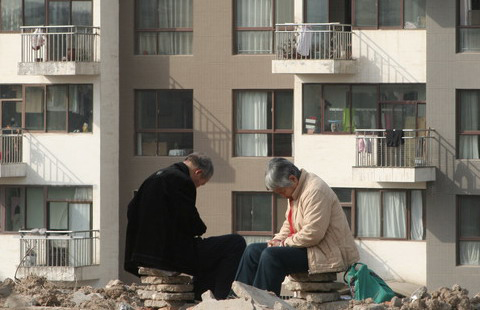China gas reforms spark investment boom
(Agencies) Updated: 2012-05-11 15:58China's installed gas-fired capacity will more than quadruple to 220 gigawatts by 2020 from 40 gigawatts last year, creating a gas power equipment market worth 26.5 billion yuan ($4.2 billion) a year for 2011-2020, nearly seven times the average size of the market in the prior five years, Barclays estimates.
That would benefit a host of domestic and foreign manufacturers, including General Electric (GE.N), Siemens (SIEGn.DE), Shanghai Electric (2727.HK), Dongfang Electric (1072.HK) and Harbin Electric (1133.HK), it said.
China also has vast gas supplies to tap both at home, where coal bed methane and shale could boost its resources to among the world's largest, and abroad, where it has a pipeline to Turkmenistan and has been importing liquefied natural gas (LNG) from Australia, Indonesia, Malaysia and Qatar. Gas will also be flowing to China next year via a pipeline to a Myanmar field.
The gas sector was virtually non-existent in China until the late 1990s, and while billions of dollars have been poured into construction of pipelines and terminals over the past decade, more than two-thirds of China's 600-plus cities still have no access to gas supplies.
Driving the state firms' push into the gas distribution sector is a government decision to bite the bullet and start freeing up state-controlled domestic prices, to encourage gas importers and producers.
Gas prices are linked to crude oil in the Asia market but inside China have been strictly controlled - like electricity and petroleum product prices - since the authorities fear volatile energy costs could hinder industrial development and create hardships for households.
But rising crude oil prices have saddled state-run energy companies with losses on gas they buy abroad and supply into the domestic market, making them reluctant to expand their business.
PetroChina (PTR.N)(601857.SS), which has been lobbying Beijing to reform the domestic gas pricing system, lost $3.4 billion in its gas importing business last year. In the first quarter of this year, the loss reached $1.62 billion.
Pilot scheme
In December, China launched a pilot scheme in Guangdong and Guangxi provinces, which include southern China's export-focused manufacturing heartland, to link city-gate natural gas prices with prices of imported fuel oil and liquefied petroleum gas.
Analysts say this will inevitably boost gas prices, which had already been raised sharply in recent years but in some major Chinese provinces are still 30 to 50 percent below crude oil-linked prices for LNG or pipeline gas from Central Asia.
Analysts and industry executives, including PetroChina President Zhou Jiping, believe price reforms will gradually work their way across China, although prices may be held low and raised only gradually for certain regions or for households.
Price increases will likely come sooner for industrial and commercial users, making shares of distributors serving that sector such as China Resources Gas and ENN a safer bet, analysts said. They also doubted higher prices would dent demand, with gas likely to remain affordable for industrial users even with 20 to 30 percent price increases.
Helping to spur the drive for reform will be a steady rise in gas imports, which the Chinese government is encouraging to reduce the country's reliance on coal.
The energy majors, as state-owned companies, are obliged to cooperate with government policy, but have been dragging their feet on boosting imports due to the losses from the price gap, and are stepping up the pressure for reforms.
"If the import of generally more expensive LNG and this fairly expensive piped gas continues to rise, the government will finally face up to the problem of increasing the price of domestic onshore gas," said Al Troner, president of Houston-based Asia Pacific Energy Consulting.
In a virtuous circle, higher prices will also encourage more imports, which are forecast by industry experts to account for half of China's total natural gas consumption by 2030, compared with 30 percent now. That would likely make China the world's largest importer of natural gas, displacing Japan.
Rising prices will also encourage China to produce more gas domestically, where its proven reserves were 2.8 trillion cubic meters (tcm) at the end of 2010, similar to Australia's 2.9 tcm and Indonesia's 3.1 tcm, according to BP. Shale gas reserves could boost that sharply, with China's Ministry of Land and Resources revealing in March that China may hold 25.08 tcm of potentially recoverable shale gas resources.
"You will have much more motivation for the incumbent, whether it is Sinopec, PetroChina or others, to develop the vast domestic reserves faster," said James Hubbard, head of Asia oil and gas research at Macquarie.
($1 = 6.3080 Chinese yuan)











